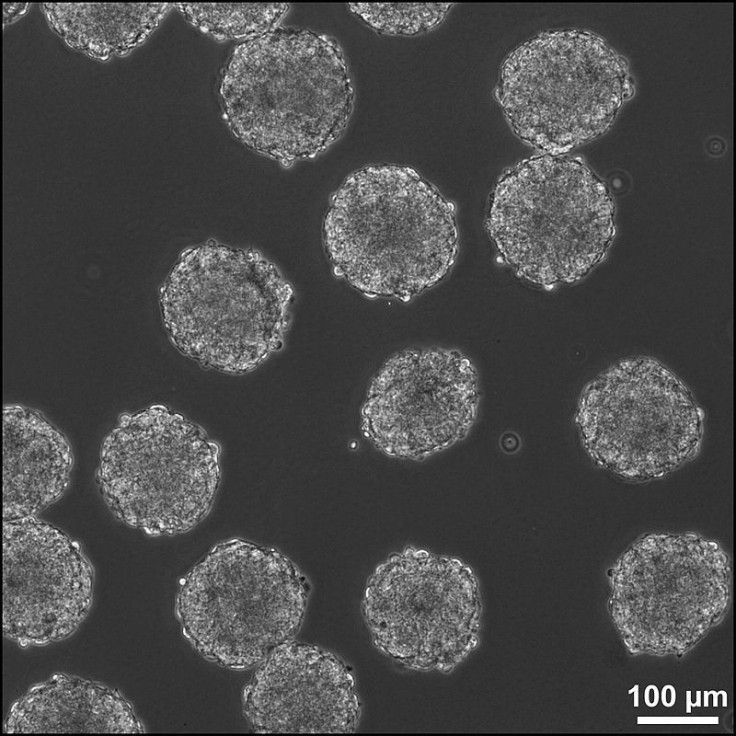Scientists Discover How To 3D-Print Embryonic Stem Cell ‘Building Blocks’

Scientists have 3D-printed seemingly everything by now — including extremely complicated bodily organs like a ‘bioficial' heart, prosthetics, and even a sternum and rib cage. With all these developments and many more on the way, it’s easy to see that 3D-printing may be a large part of the future of medicine.
Researchers have now found a way to combine 3D-printing with the vast, promising horizon of stem cells. Publishing their study in the journal Biofabrication, researchers from Tsinghua University in Beijing, China and Drexel University in Philadelphia developed a method to 3D-print the “building blocks” of embryonic stem cells. Embryonic stem cells, which are derived from a human embryo, are particularly of interest to researchers due to their ability to grow into any type of cell or tissue in the body (meaning they’re pluripotent).
When embryonic stem cells are specified to transform into any of the 200 different cell types in the human adult body, they can do so — replicating indefinitely. That’s why they’re especially useful to scientists working in regenerative medicine, where they can be applied to rebuild lost tissue after injury or disease. Embryoid bodies are 3-dimensional groups of embryonic stem cells.
“It was really exciting to see that we could grow embryoid body in such a controlled manner,” Wei Sun, lead author of the study, said in the press release. “The grown embryoid body is uniform and homogenous, and serves as a much better starting point for further tissue growth.”
The researchers managed to produce a 3D grid of sorts, which was able to grow an embryoid body, complete with self-regeneration and pluripotency. They hope the procedure could be used in the future to efficiently produce uniform “building blocks” of embryonic stem cells used to build larger tissues and micro-organs.
“Two other common methods of printing these cells are either two-dimensional (in a petri dish) or via the ‘suspension’ method (where a ‘stalagmite’ of cells is built up by material being dropped via gravity),” Sun said in the press release. “However, these don’t show the same cell uniformity and homogenous proliferation. I think that we’ve produced a 3D microenvironment which is much more like that found in vivo for growing embryoid body, which explains the higher levels of cell proliferation.”
The researchers note that their next step is to discover how to manufacture different cell types by changing the size of the embryoid body. “In the longer term, we’d like to produce controlled heterogeneous embryonic bodies,” Sun said in the press release. “This would promote different cell types developing next to each other — which would lead the way for growing micro organs from scratch within the lab.”
Source: Ouyang L, Yao R, Mao S, Chen X, Na J, Sun W. Three-dimensioal bioprinting of embryonic stem cells directs highly uniform embryoid body formation. Biofabrication, 2015.



























